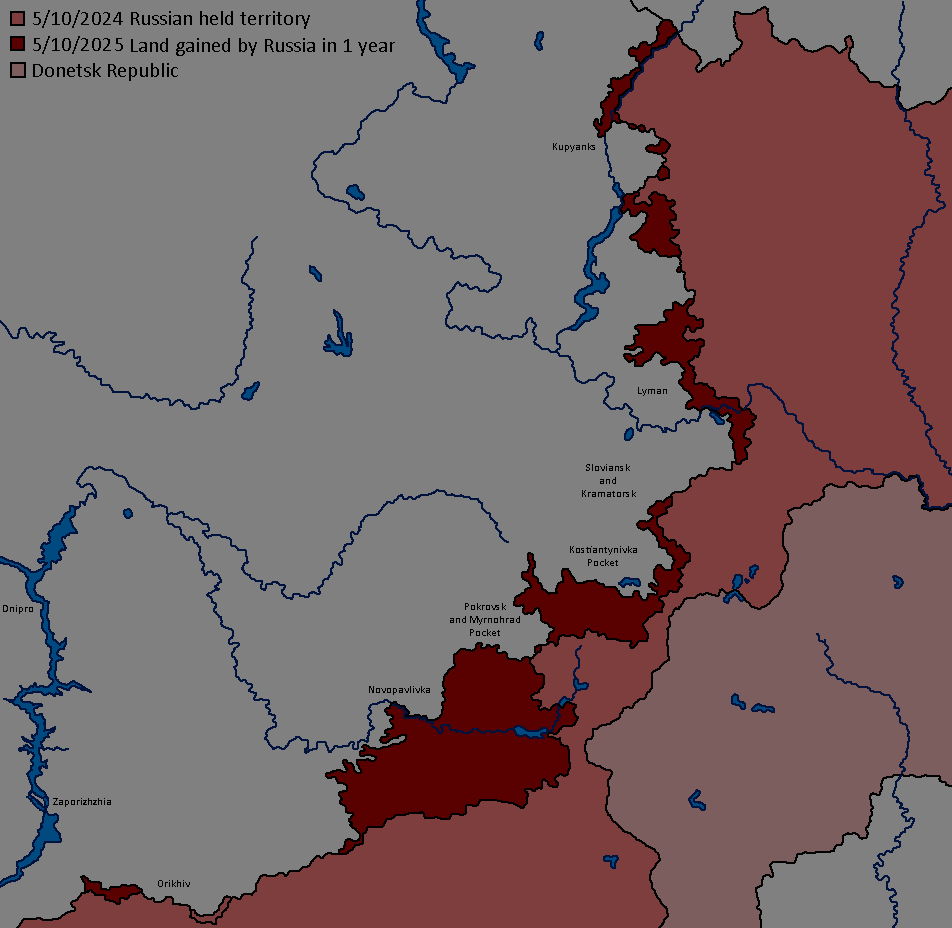Land Gained by Russia in Ukraine Map


Alex Cartwright
Senior Cartographer & GIS Specialist
Alex Cartwright is a renowned cartographer and geographic information systems specialist with over 15 years of experience in spatial analysis and data...
Geographic Analysis
What This Map Shows
This map visualizes the territorial changes in Ukraine as a result of the ongoing conflict with Russia over the past year. It highlights the areas that have been seized, illustrating the geographical shifts in control and the broader implications for the region. The map serves as a crucial tool for understanding the dynamics of this conflict, marking specific regions that have been affected by military actions and territorial disputes.
Deep Dive into Territorial Changes in Ukraine
The conflict in Ukraine, which escalated dramatically in early 2022, has led to significant shifts in territorial control. The land gained by Russia in Ukraine directly correlates with military strategies, geopolitical interests, and the historical context surrounding the region.
Interestingly, the map shows that most of the territorial gains occurred in the eastern and southern regions of Ukraine, particularly in Donetsk, Luhansk, and parts of Crimea, which Russia annexed in 2014. This is not only a reflection of military advancements but also of the strategic importance of these areas, which are rich in resources and have significant industrial capabilities. For instance, the Donbas region is known for its coal production, making it economically vital.
Furthermore, the port city of Mariupol, which has seen intense fighting, is strategically important due to its access to the Sea of Azov. Control over such key areas allows for enhanced military logistics and access to maritime routes, which are crucial for trade and supply lines. The ongoing conflict has not only resulted in human suffering but has also led to shifts in population demographics as people flee conflict zones.
The humanitarian impact is staggering; millions have been displaced, leading to a refugee crisis that has rippled across Europe. Did you know that as of late 2023, over 8 million Ukrainians have been internally displaced? This mass migration poses significant challenges for neighboring countries and raises questions about future stability in the region.
Regional Analysis
When examining the regions affected by Russia's territorial gains, several patterns emerge. In the Donetsk and Luhansk oblasts, the map indicates a substantial increase in territory controlled by Russian forces. This area has been a focal point of conflict since 2014, but recent military campaigns have resulted in further encroachments. For example, cities like Severodonetsk and Lysychansk have seen back-and-forth control, illustrating the volatility of the situation.
In contrast, the western regions of Ukraine, which have remained largely untouched by Russian advances, show a resilient population that has rallied in support of Ukraine's sovereignty. This stark geographical division highlights not just the physical landscape but also the growing ideological divides within Ukraine and between Ukraine and Russia.
Moreover, the annexation of Crimea continues to be a contentious issue. The map offers a visual reminder of how territorial disputes can affect international relations. Countries around the world, particularly those in NATO, have been closely monitoring these changes, leading to sanctions and diplomatic responses aimed at curbing Russian expansionism.
Significance and Impact
Understanding the land gained by Russia in Ukraine is essential for several reasons. Firstly, it underscores the shifting balance of power in Eastern Europe and raises alarms about potential future conflicts. As territories change hands, the implications for international law and sovereignty come into play. Ever wondered why the world should care? The answer lies in the potential for escalation. If Russia continues its territorial ambitions unchecked, it could embolden other nations with similar aspirations.
Furthermore, the economic ramifications are significant. The areas under Russian control often include vital infrastructure and resources that can shift the economic landscape. For Ukraine, the loss of territory means not only a loss of land but also a substantial loss in economic output and resources, which can hinder recovery efforts in the long run.
Lastly, the humanitarian impact cannot be overstated. The ongoing conflict has resulted in a tragic loss of life and a humanitarian crisis that transcends borders. As the international community grapples with how to respond, the map serves as a stark reminder of the stakes involved. Future projections indicate that unless a diplomatic resolution is reached, these territorial gains may solidify, leading to a protracted conflict that could redefine the region for years to come.
In conclusion, the map of land gained by Russia in Ukraine is more than just a geographical representation; it is a narrative of conflict, resilience, and the ongoing struggle for sovereignty. Understanding these dynamics is crucial for anyone interested in the geopolitical landscape of Eastern Europe and the world at large.
Visualization Details
- Published
- October 5, 2025
- Views
- 30
Comments
Loading comments...